Wilson Clash 100 Tour Racquet Review
| Overall | 85 |
|---|---|
| Groundstrokes | 84 |
| Volleys | 82 |
| Serves | 85 |
| Returns | 85 |
| Power | 89 |
| Control | 79 |
| Maneuverability | 85 |
| Stability | 84 |
| Comfort | 89 |
| Touch/Feel | 77 |
| Topspin | 85 |
| Slice | 80 |
Summary
Imagine a racquet that is powerful, crisp and spin friendly, but remains comfortable and flexible. Well, imagine no more: The Wilson Clash 100 Tour is going to dazzle tennis players regardless of what game style they play. Setting out on a two-month long playtest, our playtest team was quickly impressed with the initial feedback and feel of this innovative racquet. From the baseline, all the testers loved the plush pocketing the racquet offered. As they traded shots off the ground, our team discovered that the bigger they swung the more they were rewarded by the response of the Clash 100 Tour. At net, everyone was impressed by how stable the Clash 100 Tour played and how it held up against big hitters given its weight. When starting points, the playtesters found that this racquet played best when going after big, offensive serves, and they had a blast slapping returns. Our team had a lot to say about the Clash 100 Tour by the end of this playtest. If you take one for a demo, we're confident that this will be one of the more distinctive racquets you'll try this year.
Upsides
- Great ball pocketing
- Comfort
- Power
- Stability
Downsides
- Sometimes erratic
Bottom Line
This Wilson Clash 100 Tour blends stability, flexibility and power like no other racquet. Get ready to swing big!
Ability
Intermediate to advanced
Groundstrokes - Score: 84
With a thick, powerful beam and a low stiffness rating, the Clash 100 Tour doesn't line up spec-wise with many other racquets, so it promised to be an interesting playtest. Michelle found the Clash 100 Tour to be something special from her first outing with it, and she immediately noticed the deep pocketing at impact. She explained, "I could really feel the ball coming in and out of the stringbed. It was so interesting to have a thick beam with such a low RA. If I had to be critical, I'd say this was one of those racquets that I tend to slap with, which often happens with thicker beamed racquets. It quickly became apparent that the Clash 100 Tour was a very 'all or nothing' sort of racquet. There were times when I was so far off the court that I just went for the flattest slap of a shot. It was not the highest percentage option, but it sort of always came out that way with the Clash 100 Tour in my hands, and I got away with it. But when I missed, I missed big! I didn't always know where the ball was going to go, but I came up with some sweet hits and definitely made some shots that had no business going in. However, I craved a bit more control and a better connection to the ball. I usually know the second I make contact with my RF97 what sort of shot I've hit, and I've grown to appreciate feeling connected to my racquet in that way. When I was playing against someone who was using the Clash 100 Tour, I noticed they were having an easy time dictating points and cracking deep shots, which was frustrating because I felt like I had to work twice as hard to defend or find the right ball to dictate off while swinging my RF97. I think this racquet is going to be such a fun option for someone who has been struggling to find the joy in the game. It was the first racquet in a long time that left me laughing and telling friends about it!"
Sean found this to be one of the more interesting and perplexing reviews he has been on. He said, "I was skeptical of Wilson's claim that a racquet could be as flexible as a wood frame and as stable as a Pure Drive, but I can say now that the Clash 100 Tour delivered. My theory stands that the beam construction of this racquet is the key to its ability to connect the seemingly disparate qualities of flex and stability. Interestingly, I felt that this racquet softened when I wasn't taking a full swing and stiffened up when I took a full cut at the ball, which is perhaps also due to the design of the beam. I noticed that the ball was pocketing very deep with this racquet, and it came off the stringbed at a pretty high launch angle, which meant that if I didn't supply the necessary topspin, the ball was sailing on me. I felt like I had to really ramp up the racquet head speed, or 'slap,' just to get the ball to land in. You have to swing confidently to make this racquet work."
Troy immediately found a huge sweetspot and comfortable feel. "When I first inspected the Clash 100 Tour up close, I noticed a thicker beam, which typically correlates to a modern, firm racquet. I was taken back by the feel. It was very plush and allowed for a deep ball-pocket effect, almost like I would get from the Prince Phantom 100. Whenever I was at the baseline or deeper and had time to take a full swing, I was rewarded with easy depth and controllable power. On these full swings the ball seemed to come off the racquet with a lot of pace and tended to land in, even when I thought it was flying on me. The downside for me was the unpredictable response when I was given a short ball and tried to hit a flat put-away ball. I also struggled with the buggy-whip forehand and balls that landed near my feet. I had to use my wrist flick to get the ball back. If I really tried to brush up the back of the ball and didn't get a lot of extension on my forehand, I found that the ball died. I corrected this by aiming ten to 15 feet over the net, so the ball would go about two to three feet over the net. When I grab the Babolat Pure Aero Tour the buggy-whip or reverse forehand comes much easier, with a higher launch angle."
Erik felt quite connected to the ball. He said, "The Clash 100 Tour had a unique, crisp but comfortable feel. I generated a good amount of topspin. My slices tended to sit up, but I could knife them low when I wanted. This racquet was very stable from the baseline, and I loved trading groundstrokes with it. It was quite easy to generate racquet head speed, and I could get the racquet into position nearly effortlessly. The Clash 100 Tour worked well for my game style, although it took some adjustments."

Volleys - Score: 82
Maneuverability and stability reigned supreme when volleying with the Clash 100 Tour. Sean thought the blend of maneuverability and stability made this racquet very capable of putting balls away at net. However, he noted, "I had a difficult time with the feel of this racquet. The ball felt a bit muted coming off the stringbed, which made it hard to hit touch shots when I came forward."
Volleying was also a bit of a mixed bag for Erik. He said, "The crispness of this racquet made for a different feel when volleying. It didn't feel as soft as I would like. In the future, I would want to try to soften up the stringbed in hopes of finding a plusher feel."
On the other hand, Michelle enjoyed the racquet's response at net. She explained, "The stringbed felt great when I was at the net, and the ball pockets on volleys, too. The Clash 100 Tour wasn't as stable as racquets that I typically gravitate toward because it isn't as heavy, but it held up decently against big hitters. It was an awesome racquet to hit swinging volleys with, and my lefty volley switch-hit was also very effective. Overheads were successful as well, so I really had no complaints at net."
Troy found the racquet to be very forgiving on volleys. He said, "The Clash 100 Tour felt very fast and maneuverable, with a huge sweetspot. When playing doubles, I could close the net and put volleys away with ease. I was surprised by the stability, and I found that the racquet held its ground against heavy pace. It wasn't quite up to par with my Yonex VCORE Pro 97 (330) in terms of stability, but it did well for its weight and swingweight. I didn't always feel fully connected to the ball. Sometimes, I could drop the ball over the net with a lot of backspin and hit my target, but other times I would try to hit a short angle volley and miss by a couple of feet."
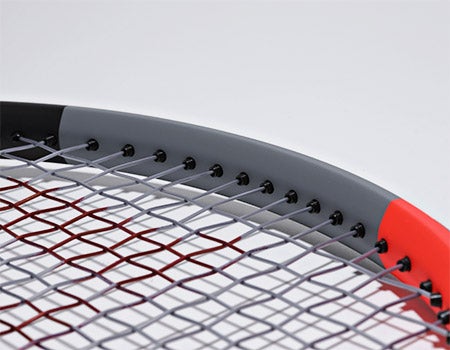
Serves - Score: 85
Our team unlocked the power when serving with the Clash 100 Tour. Troy explained, "Big power came easily on flat first serves. I could hit my flat first serve down the middle consistently, and the ball seemed to jump off the stringbed with a lot of pace. I could get plenty of wrist snap, which helped me generate a lot of spin on kick serves. There were times when I hit topspin or kick serves and my practice partner would comment that the ball had some crazy action on it. I noticed that my topspin serves were getting above the returner's shoulders quite frequently."
Erik had a similar experience when it came to the power level. He added, "I got a good amount of power with this racquet. It was extremely stable, and I could send the ball through the court with ease. However, I struggled to find spin and predictability, especially on second serves. I needed to really accelerate to make sure I utilized that deep pocketing to add some spin, otherwise the ball tended to fly long."
"There was tons of pop," Sean noted. "The ball felt like it was exploding off the stringbed, which was good when the ball went in. However, it often felt a little too 'trampoline-like' for my taste. As the playtest went on I adjusted to this and picked more forgiving targets. Once I felt confident with this racquet, I ended up scoring a lot of free points when serving."
It took Michelle some time to get dialed in with this racquet on her serve. She described, "The first time I served with this racquet, I didn't like it. The Clash 100 Tour challenged me on serves throughout the playtest. Once I tapped into that 'all-or-nothing' mentality, I was more effective with first serves, but when I took my foot off the gas I found a pretty erratic response. I kept swinging too early, and I needed a bit more mass behind the ball. My second serves were better. I could hook slice serves well and get my opponent off the court. Kick serves seemed effective, but in reality, I wasn't getting them to kick up as much as I would like and found my opponents having a relatively easy time running around the kicker to hit forehand returns."
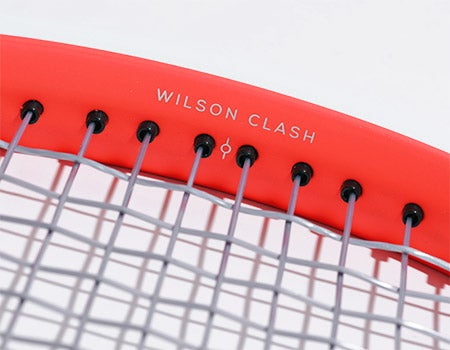
Returns - Score: 85
Returns ended up being one of the most fun shots of the playtest for our team. Across the board, the playtesters expressed that the Clash 100 Tour was a joy to slap serves back with. Erik opted to employ his diverse game style on returns. He said, "Against first serves, I could chip the ball deep and had a great feel off of the stringbed. With second serves, I enjoyed chipping and charging with this racquet because I liked how the ball felt sinking into the stringbed. The Clash 100 Tour was very easy to maneuver, and it felt extremely stable — even against bigger serves."
"There wasn't much strategy to returning with the Clash 100 Tour," said Michelle "It was just 'swing big'. When I did try to hit more of a defensive return, I wasn't sure where it was going. The Clash 100 Tour wasn't the most stable racquet when lunging after big serves either. I did find an awesome backhand angle when ripping returns off the ad side of the court. It was less of a dipping return and more pulling my opponent off the court. I felt like I was accessing a shot I had never unlocked in my game, so I'll take that as a win! Again, I wasn't playing the highest percentage tennis here, but it sure was fun to take a crack at the ball over and over again!"
"Something about the Clash 100 Tour makes it so tempting to go for a slap every once in a while," added Sean. "When returning, I noticed how the racquet would firm up when I was blocking back the big pace of the server and how stable it felt when I was returning high backhands off of kick serves. The ball would occasionally fly on me, but honestly, that was to be expected. Sometimes it's fun to just go for your shots."
Troy was feeling slap-happy when hitting returns with this racquet. He said, "There are times when Michelle will say that a certain racquet will make her want to slap winners. I knew exactly what she was talking about when I was returning with this Clash 100 Tour. I loved ripping returns with this racquet; I basically tried swinging as hard and flat as I could when I had a look at a forehand return. The crazy part was that these returns were consistently landing a foot inside the baseline. On my backhand side I appreciated the big sweetspot. If I made contact slightly off center the feel was more comfortable than it is with most 100-square-inch racquets. I never experienced a jarring or overly stiff sensation. I would have liked some added plow through against high-speed serves. I think that a bit more mass overall would help block or chip returns land deeper in the court."
Overall - Score: 85
| Technical Specifications | ||
|---|---|---|
| Length | 27 in | 69 cm |
| Head Size | 100 sq in | 645 sq cm |
| Weight | 11.5 oz | 326 gm |
| Balance Point | 12.4 in 31 cm | 9pts Head Light |
| Construction | 24.5mm / 24.5mm /24.5mm | |
| Composition | Graphite | |
| String Pattern | 16 Mains / 19 Crosses | |
| Babolat RDC Ratings | ||
|---|---|---|
| Score | Grade | |
| Flex Rating | 55 | Range: 0-100 |
| Swing Weight | 322 | Range: 200-400 |
| Michelle's Scores | |||
|---|---|---|---|
| Power | 9 | Serves | 8 |
| Control | 7.5 | Groundstrokes | 8 |
| Maneuverability | 8 | Returns | 8 |
| Stability | 7.8 | Slice | 8 |
| Comfort | 9 | Topspin | 8 |
| Touch/Feel | 7 | Volleys | 8 |
| Overall | 8.6 | ||
| Sean's Scores | |||
|---|---|---|---|
| Power | 8.9 | Serves | 8.2 |
| Control | 7.8 | Groundstrokes | 8.4 |
| Maneuverability | 8.6 | Returns | 8.5 |
| Stability | 8.7 | Slice | 7.7 |
| Comfort | 9 | Topspin | 8.8 |
| Touch/Feel | 7.6 | Volleys | 8.2 |
| Overall | 8.5 | ||
| Troy's Scores | |||
|---|---|---|---|
| Power | 8.9 | Serves | 9 |
| Control | 8 | Groundstrokes | 8.2 |
| Maneuverability | 8.7 | Returns | 9 |
| Stability | 8.4 | Slice | 7.8 |
| Comfort | 8.8 | Topspin | 8.5 |
| Touch/Feel | 8 | Volleys | 8.3 |
| Overall | 8.3 | ||
| Erik's Scores | |||
|---|---|---|---|
| Power | 8.8 | Serves | 8.7 |
| Control | 8.4 | Groundstrokes | 8.8 |
| Maneuverability | 8.6 | Returns | 8.5 |
| Stability | 8.8 | Slice | 8.5 |
| Comfort | 8.8 | Topspin | 8.6 |
| Touch/Feel | 8.3 | Volleys | 8.3 |
| Overall | 8.6 | ||
Playtester Profiles
Michelle: Open level baseline player with a semi-western forehand and a two handed backhand. She currently plays with the Wilson Pro Staff RF 97 Autograph.
Sean: Open level counterpuncher with a semi-western forehand and a two-handed backhand. He currently plays with the Yonex VCORE Pro 97 (310).
Troy: 5.0 lefty all-court player with a full Western Forehand and a two-handed backhand. Troy currently plays with a Yonex VCORE Pro 97 (330).
Erik: Open level all court player with a one-handed backhand and a western forehand. He is currently using the Yonex EZONE 98 (305).
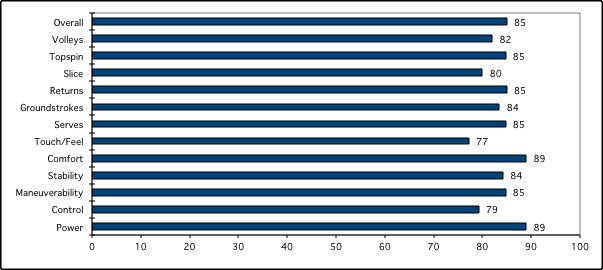


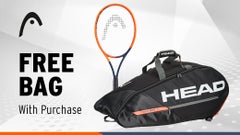
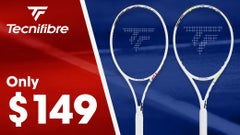
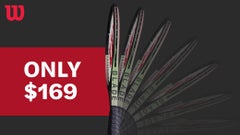
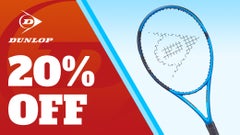
Likes
Michelle - "The Clash 100 Tour is definitely different from most racquets on the market. It's powerful, but comfortable. I love the pocketing, and it's super fun to swing. Big swings are rewarded!"
Sean - "This Clash 100 Tour manages to have great stability and a low flex. If you don't believe me, go take it for a hit!"
Troy - "For a modern, powerful, thick-beamed racquet, the comfort level is high. No matter which co-poly string we put in this racquet, there was a nice, deep ball pocket. Taking huge cuts at the ball on my returns was fun and rewarding!"
Erik - "The Clash 100 Tour has a unique crisp feel. It is very stable and quite maneuverable for its weight."
Dislikes
Michelle - "I didn't really feel like I had much control with the Clash 100 Tour. With my RF97, I pretty much know at contact what the ball will be doing, but I don't feel connected to the ball the same way with the Clash 100 Tour. And when I missed, I missed BIG. It just isn't a realistic racquet for me to compete with."
Sean - "This racquet is definitely too lively for my liking. If I didn't fully commit to the stroke the ball wouldn't drop. Also, the beam is a bit too thick, and the head is larger than I like."
Troy - "I didn't find the precision to be on par with the racquets I typically play with, like my Yonex VCORE Pro 97 (330) or Wilson Pro Staff RF97 Autograph. For some reason, I struggled to gauge the depth and launch angle of running forehands and cross-court dippers."
Erik - "I didn't get a lot of feel from this Clash 100 Tour at net. I would soften up the stringbed with a softer string."
Comparing the racquet to others they've tried, our testers said:
Michelle - "There isn't a lot to compare the Clash 100 Tour to. Imagine a flexible Babolat Pure Drive or a Prince Phantom with a thicker beam. It was a unique experience for sure. It has amazing ball pocketing, like nothing I've experienced in the last few years."
Sean - "I hate using the word 'unique,' but I think I have to here. You'd be hard pressed to find another racquet with this low an RA and this much stability. The Clash 100 Tour isn't for me, but there's got to be a lot of folks out there looking for Pure Drive playability and Phantom stiffness. The new Extreme line is the closest thing I can think of in terms of playability, but the feel is way different. It's refreshing to hit something that is so distinctive, and I hope to see some of these ideas carried forward in the future. Bonus points for innovation!"
Troy - "The Clash 100 Tour's power was in the range of the Babolat Pure Aero Tour or Volkl V-Feel 8 (315). On the other hand, the way this Clash 100 Tour pockets the ball and creates dwell time is more along the line of the Prince Phantom 100 or Head MicroGEL Radical Oversize. This racquet is unique in that sense. Due to the fact that I loved the sensation on contact, but my shot placement wasn't very predictable, it reminded me of the Head Graphene Touch Radical Pro. I found some aspects in common with the V-Feel 8 (315) as well, but this Clash 100 Tour was much more comfortable."
Erik - "I would compare the Clash 100 Tour to a Pure Drive. It has the power of a Pure Drive and the flex of a Prince Phantom Pro 100. My racquet of choice has a softer feel and is a little less powerful than the Clash 100 Tour."